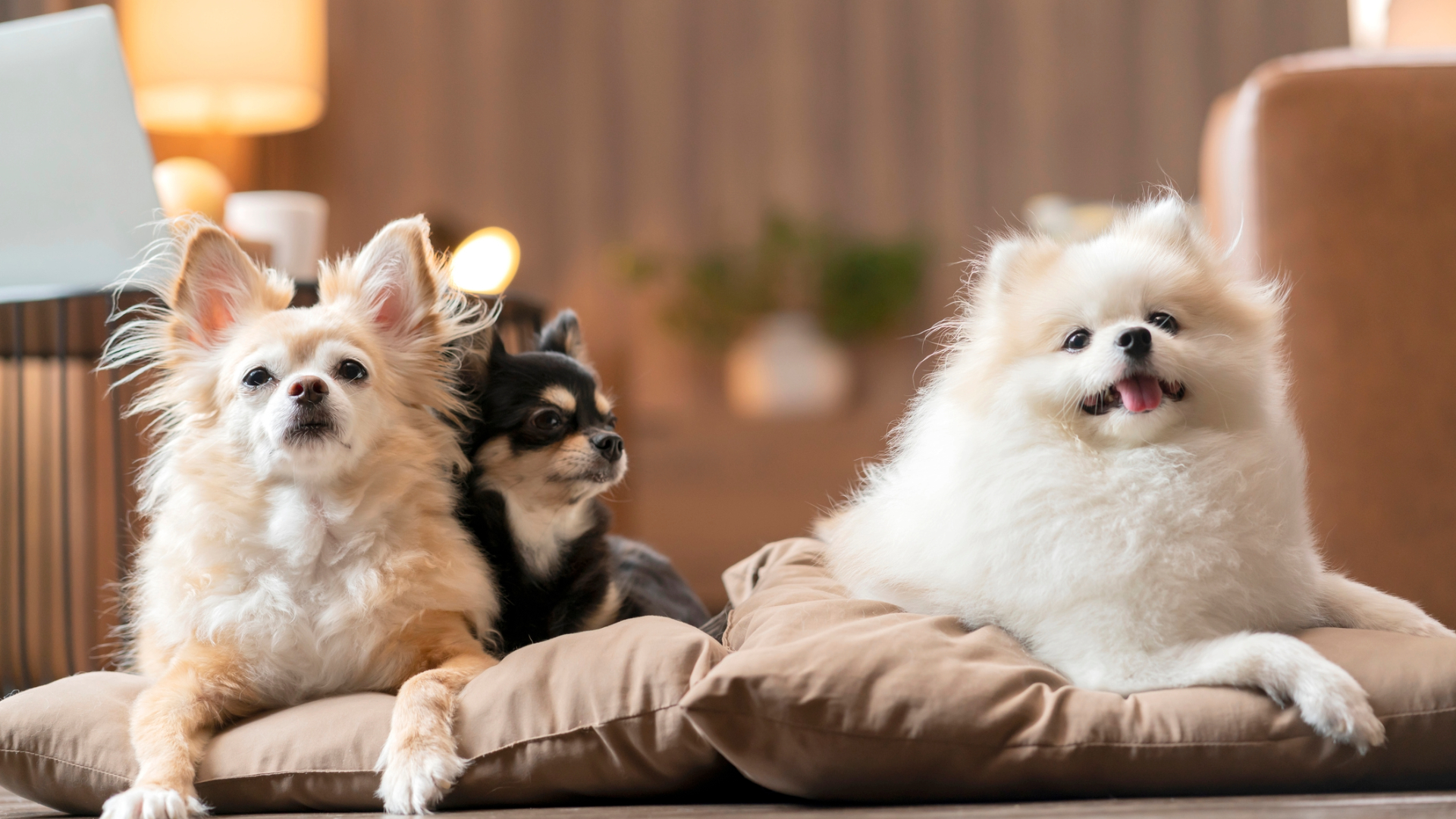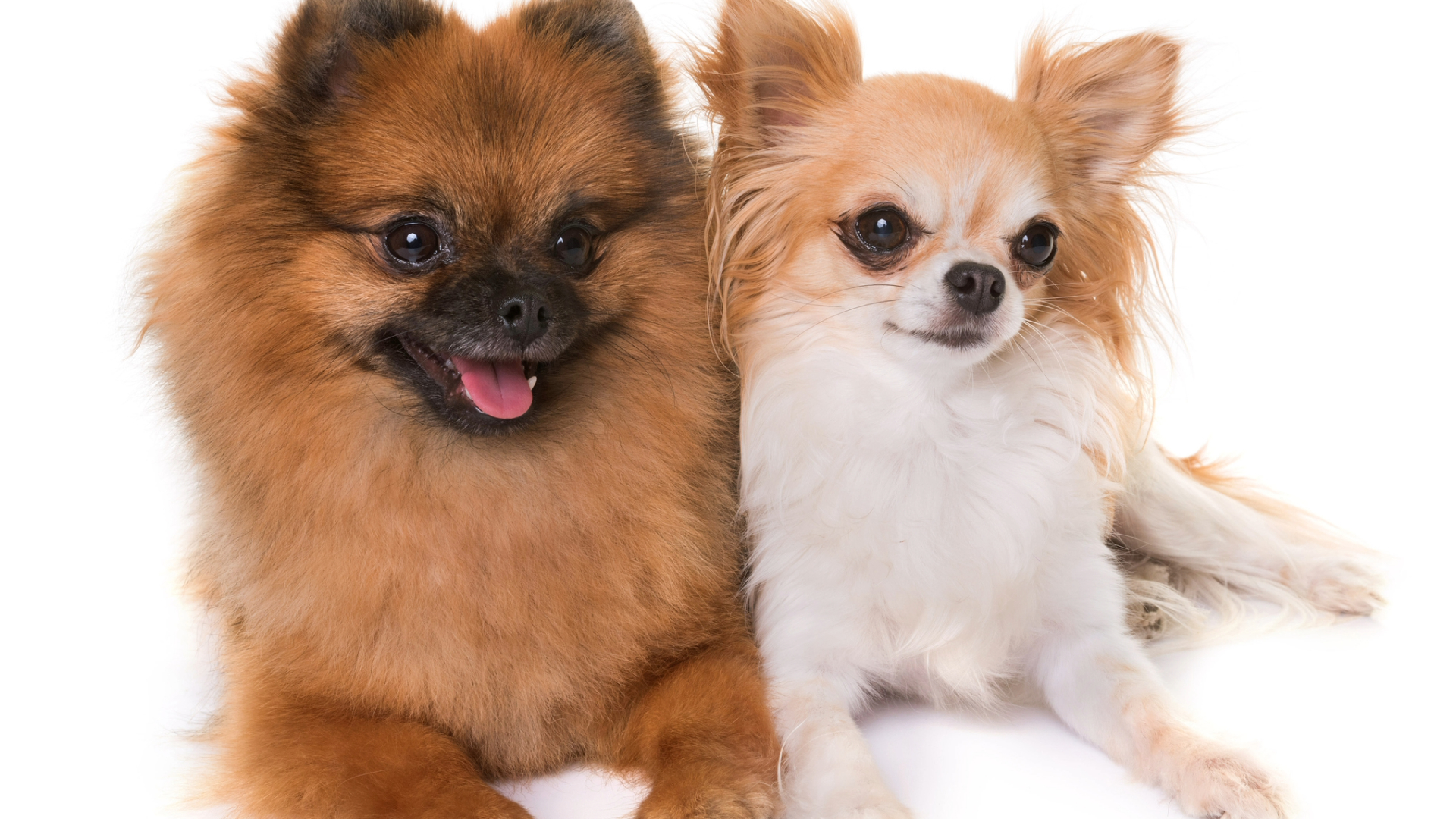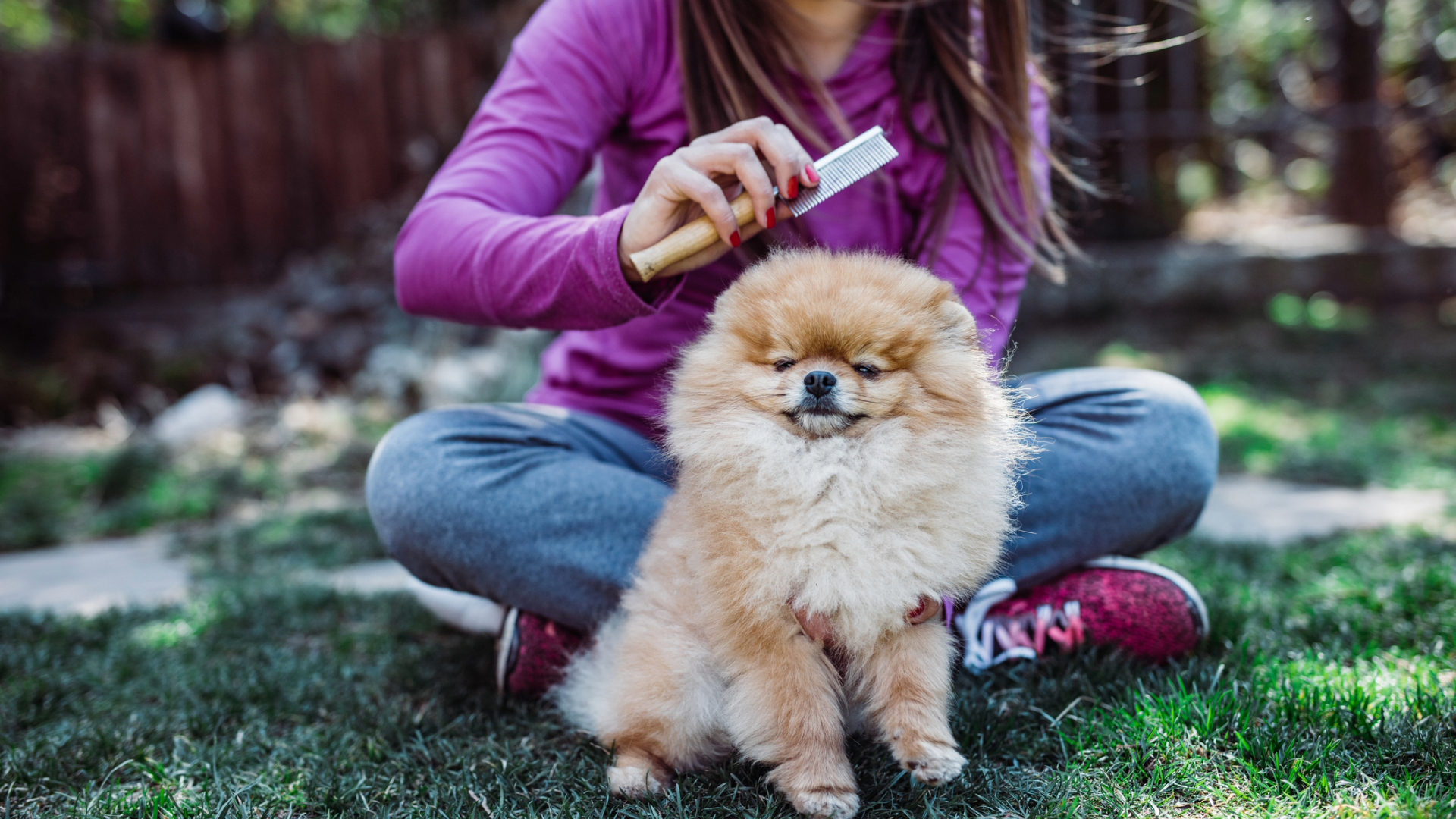Chihuahua vs. Pomeranian: Which tiny dog is best for you?
Get the low down on these petite pups with big personalities

If you are on the lookout for a small, affectionate canine companion, you may be debating the options of a Chihuahua vs. Pomeranian. Both are incredibly popular toy breeds, known for their big personalities despite their tiny size.
As a vet with over 13 years of experience working with both breeds, I have witnessed their unique traits firsthand. While both dogs may be small in stature, they make up for it with their lively temperaments and strong bonds with their owners.
Chihuahuas are confident, sassy, and fiercely loyal to their families. They often form deep attachments to one or two people and can be very protective despite their petite frames. With their smooth or long coats, apple-shaped heads, and perky ears, they have a distinctive and adorable look.
Pomeranians, on the other hand, are bubbly, social, and full of energy. Their luxurious double coats give them a fluffy, teddy bear-like appearance, and they tend to be more outgoing and sociable than Chihuahuas.
Both breeds are intelligent and highly trainable, but they do have differences in grooming needs, exercise requirements, and general temperament. This feature will discuss the key distinctions between these breeds to help you determine which breed is the perfect match for your home and lifestyle.
Chihuahua vs. Pomeranian: Size
Both Chihuahuas and Pomeranians are classified as toy breeds, but there are some differences in their size. Chihuahuas typically weigh between two to six pounds and stand around five to eight inches tall at the shoulder. They have a more delicate and lean body structure.
Pomeranians, on the other hand, are slightly larger, usually weighing between three to seven pounds and standing around six to seven inches tall. Their fluffy coats can be deceptive and make them appear bigger than they actually are.
If you have your heart set on a pint-sized pooch, here are other small dog breeds you can read about.

Chihuahua vs. Pomeranian: Appearance
While both breeds are small, their appearance is quite distinct. Chihuahuas have rounded apple-shaped heads, and large, expressive eyes. They can have a smooth or long coat.
Their ears are naturally upright, adding to their alert and inquisitive look. They come in a variety of colors and patterns, including fawn, black, white, chocolate or merle.
Pomeranians are known for their thick, double-layered coat that gives them a fluffy and teddy bear-like appearance. They have fox-like faces, erect ears, and bushy-plumed tails.
Pomeranians also come in a wide range of colors, including orange, black, cream, blue or sable. Their coats require regular maintenance to prevent matting and tangles.
Chihuahua vs. Pomeranian: Intelligence and trainability
Both breeds are thought to be intelligent, but their trainability differs. Chihuahuas are known for their sassy and independent nature. While they are smart, they can be stubborn and require patience and consistency when training.
Positive reinforcement methods work best with them. Early socialization is crucial to prevent excessive barking or timid behavior.
Pomeranians are also intelligent and eager to learn. They tend to be slightly more receptive to training than Chihuahuas, as they enjoy pleasing their owners.
Care must be taken as both breeds can develop behavioral issues such as small dog syndrome if not properly trained as a puppy. This is a term used to describe certain behaviors often seen in smaller dogs, including overcompensating for their size. These dogs may be overly aggressive, bark excessively, or jump up unnecessarily. These behaviors are thought to come from insecurity and fear.
House training can be a challenge for both breeds due to their small bladders, so frequent bathroom breaks and a consistent routine are important.

Chihuahua vs. Pomeranian: Exercise needs
Despite their small size, both breeds have moderate energy levels and require regular exercise to stay healthy and prevent boredom. There are many fun ways to work out with your pet, so you can both get the benefits!
Chihuahuas need about 30 minutes of daily exercise, which can include short walks and indoor play sessions. They enjoy a lot of mental stimulation, so puzzle toys and obedience training can help keep them engaged.
Pomeranians are slightly more energetic and require around 45 minutes of exercise per day. They enjoy brisk walks and interactive games, but their small size means they shouldn't be overexerted. Due to their thick coats, they are prone to overheating in hot weather, so exercise should be adjusted accordingly.
Chihuahua vs. Pomeranian: Grooming
Chihuahuas with a smooth coat require minimal grooming – brushing once a week is usually sufficient to keep their coat healthy. Long-haired Chihuahuas need more frequent brushing to prevent tangles.
Pomeranians, with their thick double coat, require more grooming. They should be brushed at least three to four times a week to prevent matting and reduce shedding. They may also require occasional trimming to keep their coat manageable.
It is a great idea to invest in a good quality dog brush to use. Both breeds will also benefit from regular ear cleaning, nail trimming, and dental care such as teeth cleaning with a dog toothbrush.

Chihuahua vs. Pomeranian: Health considerations
Both breeds have specific health concerns that potential owners should be aware of.
Chihuahuas are prone to dental problems, luxating patella (a condition where the kneecap slips out of place), heart disease, and hydrocephalus which is where fluid builds up in the brain and can cause seizures and developmental issues.
Due to their size, chihuahuas are more prone to experience hypoglycemia (low blood sugar). Their small size also makes them vulnerable to injuries from falls or rough handling.
Pomeranians are also prone to luxating patella, along with tracheal collapse (a condition affecting their windpipe), dental disease, and heart issues. Their thick coats can make them susceptible to overheating in warm climates.

Owners should be performing regular health checks at home. Here’s what to monitor:
- Teeth and gums: Check for tartar, redness, or bad breath – signs of dental disease. Brush their teeth daily and use dental chews if indicated by your vet.
- Eyes: Watch for redness, discharge, or squinting, which may indicate infections or irritation. Chihuahuas can have very prominent bulging eyes, which can increase the chances of injuries.
- Ears: Look for redness, odor, or a wax buildup, and clean them with a vet-approved solution.
- Coat and skin: Inspect for matting, dandruff, bald patches, or parasites. Pomeranians need frequent brushing to prevent tangles.
- Paws and nails: Keep nails trimmed (using the best dog nail clippers) to avoid discomfort and check for cracks or debris between the toes.
- Weight and body condition: Feel for ribs under a light fat layer. If any sudden changes in weight are noted – speak to your vet.
- Breathing and coughing: Pomeranians are prone to tracheal collapse – watch for honking coughs or labored breathing.
- Mobility and joints: Monitor for limping or difficulty jumping, which may signal a luxating patella.
- Energy and behavior: Sudden lethargy, hiding, or irritability could indicate illness
Both breeds should receive regular vet check-ups, proper dental care, and be fed a balanced diet to maintain optimal health.
Chihuahua vs. Pomeranian: Owner suitability
Chihuahuas are best suited for experienced dog owners who understand how to handle their strong-willed personalities. This breed is one that does well in apartments and are a great choice for smaller households. They can be wary of strangers and may not be the best option for households with young children.
Pomeranians are also well-suited for apartment living and adapt well to various home environments. They tend to be more sociable than Chihuahuas and enjoy interacting with people. However, they require more grooming and may not be ideal for owners who don’t have time for regular brushing and maintenance.
Final Thoughts
Both Chihuahuas and Pomeranians make brilliant companions, but they have different needs and temperaments. If you’re looking for a small, loyal dog breed with a strong personality, a Chihuahua might be the right fit for you.
If you prefer a sociable, fluffy, and energetic companion, a Pomeranian may be the better choice. Whichever breed you choose, proper training, regular veterinary care, and a loving home will ensure they thrive and bring joy to your life!
Found this helpful? You might also want to read these fun Chihuahua facts and fascinating facts about Pomeranians

Emma graduated from the Royal Vet College in London in 2011. She has a keen interest in surgery and went on to do a postgraduate certificate in small animal surgery and was then awarded advanced practitioner status in the same discipline.
Edited by Megan Milstead.
This page was last updated in April 2025 by Emma Chandley.
PetsRadar Newsletter
Get the best advice, tips and top tech for your beloved Pets
Emma graduated from the Royal Vet College in London in 2011. She has a keen interest in surgery and went on to do a postgraduate certificate in small animal surgery and was then awarded advanced practitioner status in the same discipline.
